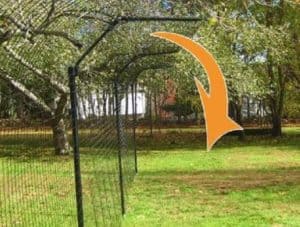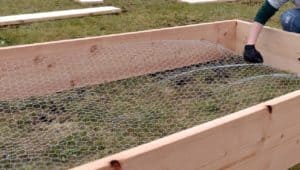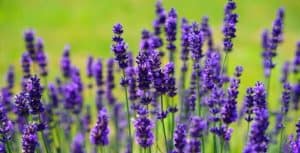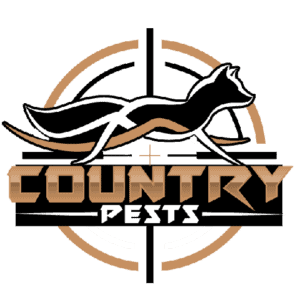It happened again. Another dead cat in our window well. Every spring for the last 3 years, we had found a dead cat somewhere on our property.
But, we didn’t own cats.
And, we weren’t trying to kill or catch them.
Like many of you, I started to wonder what I could do to keep cats away from my yard. I didn’t like to clean up the dead cats. I didn’t like the feces in my rose beds, and I didn’t like yowling at 3 am that sounded like my newborn crying.
So I started researching and testing different options. I didn’t try every method. Some take a lot of time to work, others take more investment into products.
Everyone has different methods they are willing or able to do. So, I’ve compiled 51 ways to keep cats away.
For simple navigation, I’ve broken it into several sections:
-
- Keeping cats away with the right fencing (Don’t spend money on fencing that doesn’t work!)
- Preventative Measures To Stop Attracting Cats (Stop the problem before it’s an issue)
- Solutions That Train New Behavior (Let’s keep them away for good!)
- Commercial Cat repellents (Just do your thing so I can do mine!)
- Creative Ideas That Work Well At Keeping Cats Out Of Your Garden and Flowers (Cheap and Easy!)
- Natural Solutions That Keep Cats Away (nature-friendly)
- Home Remedies To Repel Cats (You’ve already got the stuff!
- Attracting Cats To The Right Areas Of your yard (Love cats, just want them in certain areas?)
Some of these solutions take more time to implement and some of them take more money. Some are permanent and some are only temporary.
Each way discusses the frequency, cost, and permanency of the solution.
First, let’s discuss some of the concerns that you may have with having cats around your yard and garden.

Common Objections To Cats In The Yard And Garden
For many people, unwanted cats in the yard or garden are a nuisance. They can often fight with domestic cats.
Even tame neighbor cats can get into a scuffle with a pet cat because cats are so territorial.
They usually dig to bury their waste so they will dig in the flowerbeds, gardens, and yard. This messes us the look and smell of an area.
Plus it’s not sanitary.
Why?
Cats are carnivores, not herbivores. While the manure of cows, horses, and other herbivores is good for a garden or flower bed, cat’s feces is not. It carries disease, illness, and dangerous pathogens.
Cat feces in a garden can create a health hazard in any food grown close by. And, composing it doesn’t help, unless you know how to do it 100% correct.
Cats are known to know down ornaments and mess up the look of a manicured yard. This is annoying to homeowners who spend time and money to make their yards lovely.
Their mating cries often sound like a child crying. This is bothersome to neighbors, especially when it wakes up those in the area. But, it’s even worse for new parents who may scramble to help a baby, only to discover it’s the cat.
I can’t tell you how many times that’s happened to me!
- May bother or fight with personal pets
- Dig in the garden, flower beds, and lawn
- Knocking over ornaments
- Cat poop carries disease and illnesses
- Mating cries of male cats sound like babies and wake at night
- Cat feces carries disease because they are carnivore and herbivore
Should You Allow Cats In The Area?
Feral and other people’s cats often bring annoyances into your yard, there may be another side to consider when cats are driving you nuts.
First cats are great hunters. This can be helpful if you have issues with voles or mice.
But, it can be harmful if you love to feed the birds and watch them. A household cat can kill hundreds of birds a year.
Another thing to consider is the vacuum theory.
What’s that?
In most areas, cats abound.
Cats are territorial. Even when trapping gets rid of the population of cats, others quickly arrive to fill in the void.
This is the vacuum theory. It states that cat populations are not easily controlled through simple trapping. Instead, cats should be trapped, neutered, and returned to an area (TNR).
Local, existing cats get to stay in an area, keeping out other cats. But, the population doesn’t continue to skyrocket. And other, more aggressive cat’s are less likely to come around.

First Steps To Keep Cats Away
1. Talk To Your Neighbors
If you are on friendly terms with your neighbors, consider having a friendly conversation with them about ways to keep their cats out of your yard.
Your neighbors may have some good insight as to the problems they are facing in keeping their cats contained. Or, they may be willing to keep their cats contained a little better.
2. Understand Local Laws And Ordinances
It always helps to understand the laws in the area. Every city, state, and country has different laws. In some countries, cats are revered, in others seen as disease-carrying.
In the USA, cats are usually pets or feral.
Know what your rights are and what the laws allow for. Some areas will have set procedures to follow when cats are invasive of your property.
3. Talk To Animal Control
Along those lines, you may want to talk to Animal Control. They aren’t just there to kill or trap animals. In most places, animal control doesn’t trap stray cats anymore.
But, they may have some great ideas specific to your area for keeping cats away.
They will also usually have additional resources. The animal control near my area will lend out humane traps for problem animals.
Keeping Cats Away With Fencing
Proper fencing is the most effective method for keeping cats away from a specific area. Fence solutions can range from complicated and expensive to cheap and simple.
Here are some ways to make existing fencing cat-proof.
5. Bury Hardware Cloth Or Chicken Wire 1 Foot Below Ground
Cats love to dig. They can take the narrowest of gaps and dig to make a hole they can fit through.
Bury hardware cloth or chicken wire at least 1 foot below the surface of the ground. It will keep cats from digging under your fence.
You can also use boards, metal sheeting, or other supplies that you may have more readily on hand.
6. Angle The Top Of The Fence Outward
Envision a prison. Adding part of the fence outward so that cats can’t get over the fence. This type of fence will probably require some neighbor cooperation as it may interfere with your neighbor’s yard.
Or, you can use this technique for specific areas that you need to keep cats out of.
- Catproof fencing slanted top outward https://www.neighborhoodcats.org/how-to-tnr/colony-care/keeping-cats-out-of-gardens-and-yards-2

7. Install Oscillot Fencing
Oscillot fencing attaches above regular fencing. It rolls when a cat jumps on top.
This keeps the cat from being able to jump on top of the fence. The cat falls back down and doesn’t gain access to the restricted area.
Oscillot fencing will help to keep your pet cats inside the yard as well!
8. Install 2 Inch PVC Pipe To Your Fence
This is a DIY take on Oscillot Fencing. A PVC pipe is hard for cats to grip.
If you install it above your regular fencing, then cat’s can’t grip the top of the fence and have a difficult time getting over.
You will need to make sure that there aren’t any trees or other methods for them to climb over the fence though.
9. Use Bird Netting As A Barrier To Specific Areas
Netting can keep cats out of an area. Use it to cove specific areas you want cats to steer clear from.
This is usually a good option for specific, smaller areas.
10. String Fishing Wire 2 Inches High To Keep Cats Away
Fishing wire can be used in the place of fancy fencing solutions to keep cats from going over a fence.
Tightly string it 2 inches above the fenceline. The fishing wire is mostly invisible to cats and keeps them from getting on top of the fence to jump over.
You will need to keep the wire taut for it to work. You will also need to find a way to string it above your fence.
Still, it’s a fairly cheap and simple solution that works well.
11. Use Floating Row Covers To Keep Cats Out Of Garden Beds
Floating row covers not only help to create a mini-zone for your garden but protect your plants too!
You can easily create some row cover by pending PVC pipe over your garden beds. Cover in plastic for a “mini-greenhouse” effect.
Or, cove with row covers for added shade if you live in a hot zone.
The row covers will keep cats out of your garden beds, though they may use another part of your yard.
At least your produce will be safe!
12. Install Electrical Wire Above Raised Beds To Scare Cats Away
A low voltage wire is the best way to keep cats out. Low voltage means that it won’t kill small animals, but will provide a shock that surprises them.
Cats learn to steer clear of the wire and stay away from the garden areas you are protecting.
The best part?
After cats have learned to stay away, you can take down the wire and cats will still stay away.
That is until new felines move into the area. Then you’ll have to use a hot wire again.
- Place the wire 3-4 inches above the raised bed or the ground. The exact height will depend on the size and breed of the cats that are trespassing.
- Attach the wire to fiberglass rods. The rods should be pushed securely into the ground. They should also be at the end of the beds.
- The wire should attach to each other and to each fiberglass rod to form a circuit
- Attach the wire to an electric fence charger. Battery-powered and solar-powered chargers are available
Check out this article on how to install an electric fence for beginners. You can also see the best fences for cats in my resources section.
I’ve listed out the best fences for pest control and animal containment.
Preventative Measures To Stop Attracting Cats
While fences can effectively keep cats out of your yard and garden, it also helps to eliminate the reasons cats are coming by first.
Cats come into the yard for several reasons.
- Food: Mice, voles, chipmunks, and birds are all great sources of food for cats. Feral cats must rely solely on what they hunt for food.
- Protection: A shady spot, a shed, or a quiet corner. Cats are often looking for a safe place near food or water to rest.
- Reproduction: I hate to mention it, but male cats will go far and wide to find a female in heat. Lady cats can attract unwanted males to an area.
Keeping this in mind, there are several ways you can help to keep cats from being attracted to your yard.
13. Avoid Leaving Your Garbage Out Where Cats Can Get Into It
Cats have a great sense of smell. Hungry and feral cats are the most likely to get into garbage and keeping it contained in an important preventative step.
This will also help with dog issues and raccoon problems. Keep your trash put away. Lock it in your garage or secure it with a lock or a bungee cord.
But, keep it safe insecure so cats can’t get into it.
14. Control Mice, Rats, and Vole Populations
Excessive populations of rodents can attract cats to an area. Keep your yard cleaned up and the rodent population down.
Check out this article for many ways to keep voles under control. (Hint: Get ideas that don’t involve keeping a cat around.)
15. Place Bird Feeders In A Location That Keeps Birds Safe From Cats
Birds are another favorite food for cats. Keep the local bird population safe by properly placing bird feeders.
A properly placed bird feeder won’t attract other smaller scavengers, all of which are additional food for cats. Be sure to check out this article on how to best place a bird feeder. I spent weeks researching all types of feeders and the birds they attract.
Place bird feeders at least 6 feet high and away from other shelters.
16. Clean Cat Waste With Enzymes To Erase Signs Of Previous Visits
Cats love to return to areas they have been before. One of the ways they do this is through scent.
Clean areas where cats have urinated or defecated with enzymatic cleaners that will target the fats in the feces and clean up the smell.
Enzymatic cleaners contain good bacteria that help to kill remaining bad bacteria and are effective in eliminating the smell of a cat’s visit.
This is especially important as cat urine contains uric acid, one of the hardest components to eliminate in cat pee.

Is vinegar an enzyme cleaner? Vinegar is not an enzyme cleaner. Vinegar is a strong deodorizer. For most people, vinegar will appear to take away the scent of cat urine. But, vinegar doesn’t break down all the components of cat pee and eventually, the smell may be detectable again.
Even if the smell isn’t detectable to humans, cats will still be able to smell the remains of a previous visit.
Is hydrogen peroxide an enzyme cleaner? Hydrogen peroxide is not an enzyme cleaner. It oxidizes when it encounters cat urine. This makes it appear to work. It also temporarily covers the smell of cat urine but does not break down the uric acid.
Quality enzyme cleaners will break down all of the components of cat urine.
Remember, even if the smell isn’t detectable to human noses, it is often still detectable to cat noses. For my recommendations of the best enzyme cleaners to use, check out my resources page.
17. Block Access To Shelters
Check your garage, outdoor sheds, and other areas around your yard. Block off or eliminate access to shelters where cats can hide.
This includes trimming back bushes and trees to eliminate hiding spots.
Cover holes to sheds. Keep garage doors closed and access restricted.
18. Eliminate Cat Attracting Plants
Some types of plants are very effective in attracting cats to your yard. Even when you take steps to keep cats out, some plants will make cats get motivated to find a way in.

Photo Credit: Katieb50 Flickr
Plants that attract cats to your yard include:
- Catnip
- Mint
- Lemongrass
- Cat Grass, also named Dactylis glomerata
- Valerian
- Cat thyme- not thyme although it shares the same name
- Spider Plants
- Honeysuckle
- Silvervine
Solutions That Train New Behavior
Another popular way to keep cats out of the yard is to train them that your yard or garden isn’t a fun place to hang out. This can be done with a variety of methods.
To be effective, each training method needs to be regularly applied. For this reason, I left a water squirt gun off the list. It’s too hard for most people to hang around their yard day and night waiting for a cat to come by.
19. Install 1 or more Automatic, Motion-activated Sprinklers
Motion-activated sprinklers aren’t made to water your lawn. They are made to emit a rapid burst of water when an animal crosses into an area.
The water rarely hits the animal but does startle them away.
Cats hate water.
As a result, they usually learn very quickly to stay away from an area.
If you use a motion sprinkler, then make sure to use it from the Spring to fall so that the cats in your area are trained when winter hits and you have to put the sprinkler away.
20. Use Ultrasonic Sound To Scare Away Cats
Ultrasonic cat devices emit a high-frequency sound that most people can’t hear.
The high pitched sound bothers cats and scares them away.
The devices are motion activated so it only sounds when a cat invades a specific area.
Turn the device toward the area you want to protect.
Commercial Cat Repellents
Commercial cat repellents usually rely on smell to keep cats away.
They should be reapplied regularly. Some claim to last as long as a month before reapplied is needed.
But, all will need to be reapplied after snow or rain.
21. Critter Ridder
Critter Ridder is made by Havahart. It uses a blend of pepper seeds and oils to repel cats. The spiciness of the pepper is uncomfortable for cats to walk on.
It has one of the best ratings for its effectiveness compared to other commercial repellents. It has about 50% happy reviews.
Many other commercial products have even poorer reviews.
I haven’t used this product myself, but I read hundreds of reviews. Most people who use it for cats are happy, but it doesn’t seem to work for every kind of animal or pest.
Critter Ridder has to be reapplied every 30 days.
Some users complain of smelling it when used. You can check the price out on Amazon here.
22. Shake-Away
Shake away uses predator urine to keep cats and other animals away. It has mixed reviews by users.
For some people, the smell is very distasteful. Others prefer it over the cat urine smell.
It should be applied in areas that cats frequent. It should also be sued according to instructions.
If it’s used too sparsely, it won’t work.
23. Natural Amor Repellent
Natural Amor Repellent uses peppermint oil and other natural repellents. The company has put together spices that were found useful in university studies.
You can check out the price and reviews here on Amazon. It has a 3/5 average review. This would probably be the product I’d try if I chose to use a repellent to keep cats away.
It comes in a spray bottle that can be sprayed to a problem area.
Many reviews love the product, but it doesn’t work for any small animals. It does appear to work well for cats.
24. SSSCat Repellent
SSSCat uses air to scare cats away. When the cat gets close to the device, it releases a hiss of air and a small sound.
Ssscat repellent has a user review of 4.3/5 stars. You can check out the price on Amazon here.
The air blasting into the cat’s face startles it and scares it away.
The cat must be within 3 feet of the device for it to work.
It can be placed in gardens or used in homes.
Creative Ideas That Work Well At Keeping Cats Out Of Your Garden and Flowers
Although it may seem impossible to keep cats out of your garden or flower beds, it is very possible.
And,
You can do it with some simple steps.
25. Place Scat Mats Around Flower Beds
Scat mats have plastic spikes that make walking over them uncomfortable. Cats stay away from them after trying it a single time.
Simply cut the mats and spread them around your flower beds. They can be easily moved for gardening and replaced afterward.
If you don’t have scat mats, you can also use the underside of a carpet mat.
It isn’t as effective, but will still help to deter cats away. Find scat mats on Amazon here.

Photo Credit: Gardeners.com
26. Push Pine Cones Into The Soil Around Your Flowers
Cats love to dig.
But, they hate rough, pointy areas. Pine cones that are pressed into the dirt around your flowers are effective at keeping cats away.
The only downside is the patience it might take to cover a larger flowerbed.
But, the pinecones will break down and be good for you soil so you aren’t hurting the health of your soil or surrounding area.
27. Scatter Nut Shells In Flower Beds
Nutshells work much the same was as pinecones. It creates a sharp and rough surface around your flowers
Nutshells can be very sharp, but they are also biodegradable. So they will compost well.
Meanwhile, they will help to keep cats from digging in the area.
28. Use A Gravel Mulch
Gravel is rough and difficult for cats to dig through.
But,
It’s not really a mulch. It does provide ground cover around your flowers and will protect them from digging cats.
So you’ll have to decide if its more important to keep the cats away with a permanent solution, or to keep your soil soft and gravel-free.
Check this out!
If you decide to use gravel to keep chickens away, first put down weed cloth. The weed cloth will act as a barrier against the soil and gravel mixing.
It will also make it easier to gather the gravel in the future if you decide to change your landscaping later.
29. Upcycle Mesh Bags To Keep Cats Away
You can do a good turn for the environment and help keep cats away by upcycling mesh bags.
Bags like onions and potatoes come in are made of plastic and don’t break down easily.
Plus they create some environmental concerns in landfills.
But, you can use them around your flower beds to create an unfriendly place for cats.
You will need to secure them with sticks or garden staples to they don’t blow or move.
But, it’s another way to keep cats from digging in your soil.
30. Lay Chicken Wire Around Plants
Lay chicken wire on the ground. Cut holes for your flowers.

Photo credit: McChord AF
Chicken wire is tough and won’t rip or tear. It will prevent cats from digging in the soil to do their business.
But,
It won’t prevent them from walking on it.
And,
If your flower beds are the only dirt around, you may still get a mess on top of the chicken wire. But, if there are other places, cats will prefer to go to an area where they can still dig.
Natural Solutions That Keep Cats Away
Natural solutions offer an environmentally friendly solution to keeping cats away. These solutions include mostly plant-based solutions that cats find distasteful.
Some plants attract cats, but some plants are repugnant to cats.
31. Grow Plants That Are Repugnant To Cats
Whether you live in a dry or humid climate, a cold or hot area, there are plants that cats don’t like.
Some of the most popular plants that cats hate are:
- Rue
- Lavender
- Pennyroyal
- Coleus Canina: nicknamed scaredy cat plant
- Lemon Thyme
- Absinthe
- Eucalyptus
- Geraniums
- Basil
- Thyme
- Garlic
- Cloves
- Daffodil
- Tulips and hyacinth
- Lilies
- Lily of the valley
- Crocus
- Chrysanthemums (including daisies)
- Cyclamen

Interspersing these plants along the borders of your yard or throughout your garden will help to keep cats away.
Just don’t mix them with other plants that cat’s love!
32. Use Eggshells As A Cat Deterrent
Cat’s supposedly don’t like the smell or feel of eggshells. They do like chickens and cats have been known to eat eggs so I’d be careful with this solution.
If I were to use eggshells, I’d crush them into pieces and scatter them around my plants. In that way, the uncomfortable feel of the eggshells would probably do more than anything else to keep cats away.
33. Use Scented Oil Sprays To Repel Cats From Specific Areas
Plants can help to repel cats and the oils from certain plants will also help.
Spray herbal oils on plants or in specific places that you want to keep cats away.
Essential oils are often a little pricey so this solution works best for a favorite flower or a plant that you are especially fond of.
Mix 1 part oil to 3 parts water.
Spray on the leaves and in the area you want the cat to stay away from.
Essential oils that work especially well for keeping cats away are:
- Lavender oil
- Eucalyptus oil
- Lemon oil
- Lemongrass oil
Home Remedies To Repel Cats
Home remedies are popular because the things used in most home remedies are easily available and doesn’t have a lot of extra costs.
But, the effectiveness varies, and many home remedies don’t last for a long time. We will discuss various home remedies to repel cats and why they are thought to work, at least temporarily to repel cats.
34. Scatter Citrus Peels Around Your Garden
Cats don’t usually like the strong smell of citrus oils found in the peel. This includes lemons, oranges, grapefruit, limes, and other citrus fruit.
Scatter the peels in the areas you want cats to stay away.
You will need to replace the pills regularly. As the peels dry, they will lose their effectiveness.
That means that citrus peels will only be effective for a day or two.
Because the outdoors tends to diffuse scents, make sure to have the peels concentrated enough for cats to smell.
If they are spread across a wide area, cats will usually just find a place between the peels.
This can also be an unsightly method so consider using them in specific areas you care more about.
One way to fix the bad “looks” of orange peels is to grate them and scatter the grated peels.
35. Sprinkle Black Pepper Around The Area
Pepper causes irritation and itching to cats when they encounter it. It is uncomfortable on the pads of their feet.
It doesn’t harm them but does annoy them.
Generously sprinkle black pepper around the area you want cats to steer clear from. High traffic areas are good areas to put black pepper around.
It will blow away with the wind so reapply after any rain or wind.
You will also need to reapply regularly.
36. Use Coffee Grounds To Repel Cats
Coffee grounds carry a more pungent and longer-lasting smell than citrus peels.
Coffee is very intense and cats don’t like the aroma.
The good news?
It’s also brown so it will blend better visually with your yard than orange peels.
Just put it around your favorite plants or down the rows of your garden.
Continue to add more as you drink your favorite Joe.
Don’t forget!
Coffee grounds are also good for your plants.
37. Spray Vinegar To Clean A Cat’s Scent And Repel Them
Vinegar works well as a dual-purpose solution. The strong odor is supposed to repel cats.
But, vinegar is also a great disinfectant.
It will eliminate the odor of the cat’s previous visits temporarily. It will need to be reapplied to continue to be effective.
Cat’s like to return to the same place. Their urine marks those familiar spots.
Vinegar can eliminate the previous traces of feline visits and make the area less appealing for them.
You will need to respray after it rains, and regularly.
Vinegar doesn’t work well on the dirt. It is best used on fences and other surfaces that can carry the scent of urine.
Plus, you can spray vinegar on some plants to keep cats from going through them. Make sure to test a few leaves for a few days before.
38. Place Aluminum Foil To Create Uncertainty In Cats
Aluminum foil is reflective. Cat’s don’t generally like it because they can’t tell where the surface is.
In most cases, cats will stay away from the foil because of the uncertainty.
But, that doesn’t mean it’s fool-proof.
A desperate cat might go ahead and tread the path and discover that there isn’t any danger.
So, keep an eye on the areas where you place the foil to make sure it is working.
Tinfoil should be placed horizontally on the surface.
It should also be secured with rocks or earth staples to keep it from blowing away.
39. Cats Hate Pipe Tobacco
If you know anyone with a pipe habit, see if you can get their used pipe tobacco.
The smell of tobacco is strong and cat’s hate it.
Spread it in areas where cats come into your yard to keep them away.
Holes under fences and small openings are a good place to put the pipe tobacco.
40. Use Plastic Forks To Keep Your Flowers And Garden Safe
Stick plastic forks and knives in the ground, pointy side up.
Space the utensils about 2-3 inches apart.
This creates a prickly area that doesn’t allow cats to dig. It does the same thing as the scat mat.
If you don’t have plastic forks, you can also cut up and use a carpet mat.
Place it upside down in areas you don’t want to be dug.
Or, use chopsticks and place them around the beds you need to be safe.
41. Keep Cats Off The Fence With Fishing Wire
Cats are great jumpers and will often gain access to an area by jumping over the fence.
Make it hard for them to get across by tightly stringing fishing wire across the top of the fence.
The wire should be 2-3 inches above the top of the fence.
It should also be tight and secure.
Plus, it’s invisible.
Cats try to jump on the fence and will hit the wire. They won’t understand why they can’t get to the surface of the fence.
This helps to train them not to jump the fence.
42. Create A Harmless Booby Trap For Cats To Scare Them Away
This might annoy your neighbors, but you can create a sound booby trap to scare cats away.
Simply string up some cans with fishing wire.
Two or three cans should be strung together.
Rotate the height that you place the cans from the ground to a foot-high.
Connect the cans with fishing wire.
This makeshift “fence” should go around your garden or another area where cats frequent.
When a cat goes into the area at night, the cans crash, scaring them away.
43. Spread Vaseline Across The Fence Surface To Keep Cats Away
Cats hate the sticky feel of vaseline on the pads of their feet. It keeps them from sensing other things on the ground.
You can take advantage of this by spreading vaseline across the top of your fence. This will hopefully help to keep cats from going over your fence to get to your yard.
44. Attract Cats To The Right Areas Of your yard
It can be difficult to keep all cats out of your yard. If there are lots of cats around or you have a large yard, it’s an even more impossible task.
Instead, consider creating a feline haven to attract cats to a specific area and away from other areas.
Even feral cats need a safe place to rest and a cat garden can provide that.
Make it more attractive to cats than the areas you need to keep safe.
There are several things you can add that will attract cats.
- Plants: Mint, Catnip, Cat Thyme, Honeysuckle, and Cat Grass
- Create an outdoor litter box by framing in a little sandbox
- Add a perch for them to check out the view
- Include a scratch post
- Put in a water feature
- Plant grass
Other Solutions For Keeping Cats Away
This section includes other long-term ways to keep cats away. It also includes some unconventional methods that have been used.
45. TNR- Keeps The Cat Populations In Control
Trap- Neuter-Return is a human way to keep feral cat populations under control.
It is more expensive, but the long-term effects are lasting.
While euthanizing feral cats can solve a cat problem temporarily, it is rarely permanent.
Other cats will usually come to an area to fill a void.
Because cats are territorial, existing feral cats can help to keep out other cats.
But, there’s a problem.
Feral cats are usually not neutered and will repopulate quickly.
By participating in TNR, you help to limit the population of feral cats permanently.
46. Humanely Trap Cats
Trapping cats is a popular strategy. Many people trap them and then release them a distance away.
But, that isn’t humane to the cat or nice to the human population where you release the cats.
Cats that are dropped in a new area can be harmed by unknown dangers, struggle to find food, and have other painful experiences.
Including territory wars with existing cats.
If you choose to trap local cats, then make sure you have already located animal shelters that are willing to take them in.
47. Support Local Shelters And Programs For Strays
Be a part of the solution by supporting local programs that humanely deal with stray animals.
Donate or volunteer to programs that help to educate or offer solutions for cat populations.
Some vets participate in TNR programs for a discounted cost.
Consider donating.
48. Bill The Cat Owner For Their Cat
I read this one on a forum. I can’t believe that is was a sincere solution.
One annoyed homeowner claimed to trap neighborhood cats in his yard.
Then, he sent a bill that ransomed the release of the cat to their owner.
He turned the cats into a shelter if the owner didn’t pay for the return of their cat.
But, that is likely to create neighborhood enemies. I’d consider carefully before using this technique.
49. Does Blood Meal Keep Cats Away?
Bloodmeal is often a cited solution. The smell of blood is supposed to repel cats.
But there are several problems with using blood meal to repel cats.
First, cats are carnivores. So, it’s just as likely to attract other cats to an area as to repel them. Its effectiveness isn’t consistent.
Second, it will usually attract dogs, coyotes, or other predators to the area.
So you could end up with a bigger problem than you had before.
50. Get Rid Of Cat Feces
Cat feces carries dangers, disease, and bacteria that isn’t good for gardens. Make sure to take a shovel and dispose of cat feces when you find it.
Use vinegar sprinkled over the area to get rid of pathogens and the smell.
51. Adopt A Dog
Another way to keep cats out of your yard is to adopt a dog. Some dogs get along with cats, but that usually happens when they are raised together.
And,
There are certain breeds of dogs that are more likely to hate cats and keep neighborhood cats away. Dog breeds that tend to hate cats are hunting dogs, terriers, sighthounds, fighting dogs, and herding dogs.
Those breeds are:
- Scottish Deerhound
- Samoyed
- Alaskan Malamute
- Norwegian Elkhound
- Siberian Husky
- Jack Russell
- Scottie
- Bedlington Terrier
- Fox Terrier
- Rat Terrier
- Schnauzer
- Greyhound
- Italian Greyhound
- Saluki
- Whippet
- Afghan
- Borzoi
- Pit Bulls
Related Questions
Do Mothballs Keep Cats Away?
Mothballs are not effective in keeping cats away. They are made for small enclosed areas and small insects.
They are not effective on larger animals.
You would need hundreds of mothballs in an area to be effective against cats. That would also put the human population at risk of toxic fumes.
It will harm other animals in the area. And, it will be ugly and costly to have that many mothballs in an area. There are better more economical methods to use.
Does Ammonia Keep Cats Away?
Ammonia should not be placed outside to keep cats out of a yard. It is dangerous for people and animals.
Small children can find it and drink it.
Other animals and pets can find it. It is not good for the environment. Plus, it’s not very effective.
Please use other solutions to keep cats away.
How Can I Keep Cats Out Of The Sandbox?
The best way to keep cats out of the sandbox is to keep it covered when your kids aren’t playing in it.
Mesh netting is effective in keeping cats from digging. It protects the sand and keeps it sanitary for children to use.
Conclusion
Keeping cats away can take several combined methods. I hope this article was helpful. You might also like these other articles:
How To Properly Place Bird Feeders


